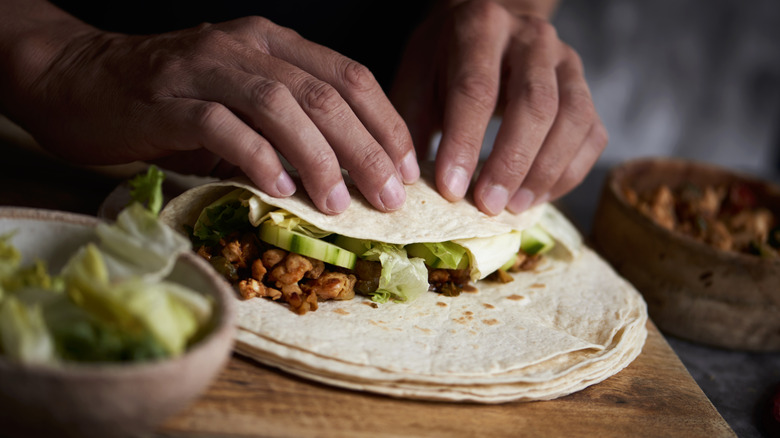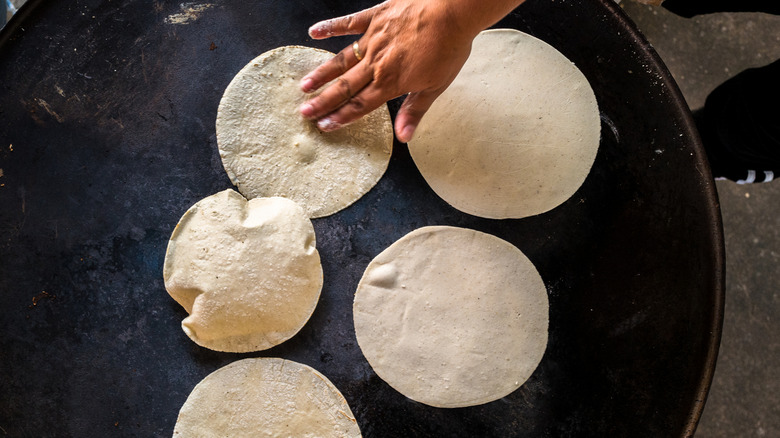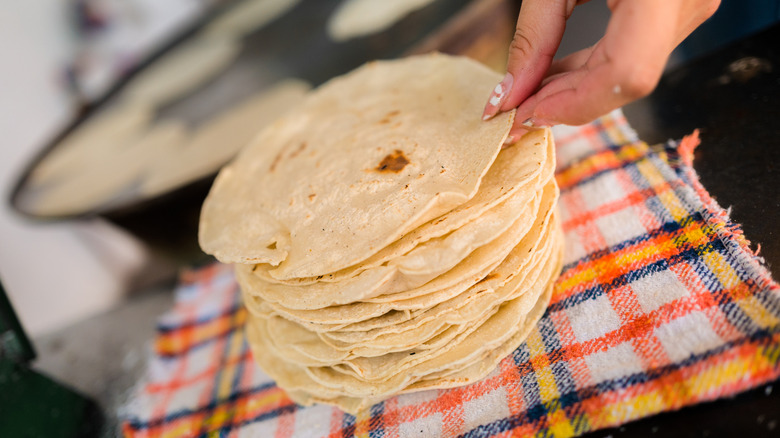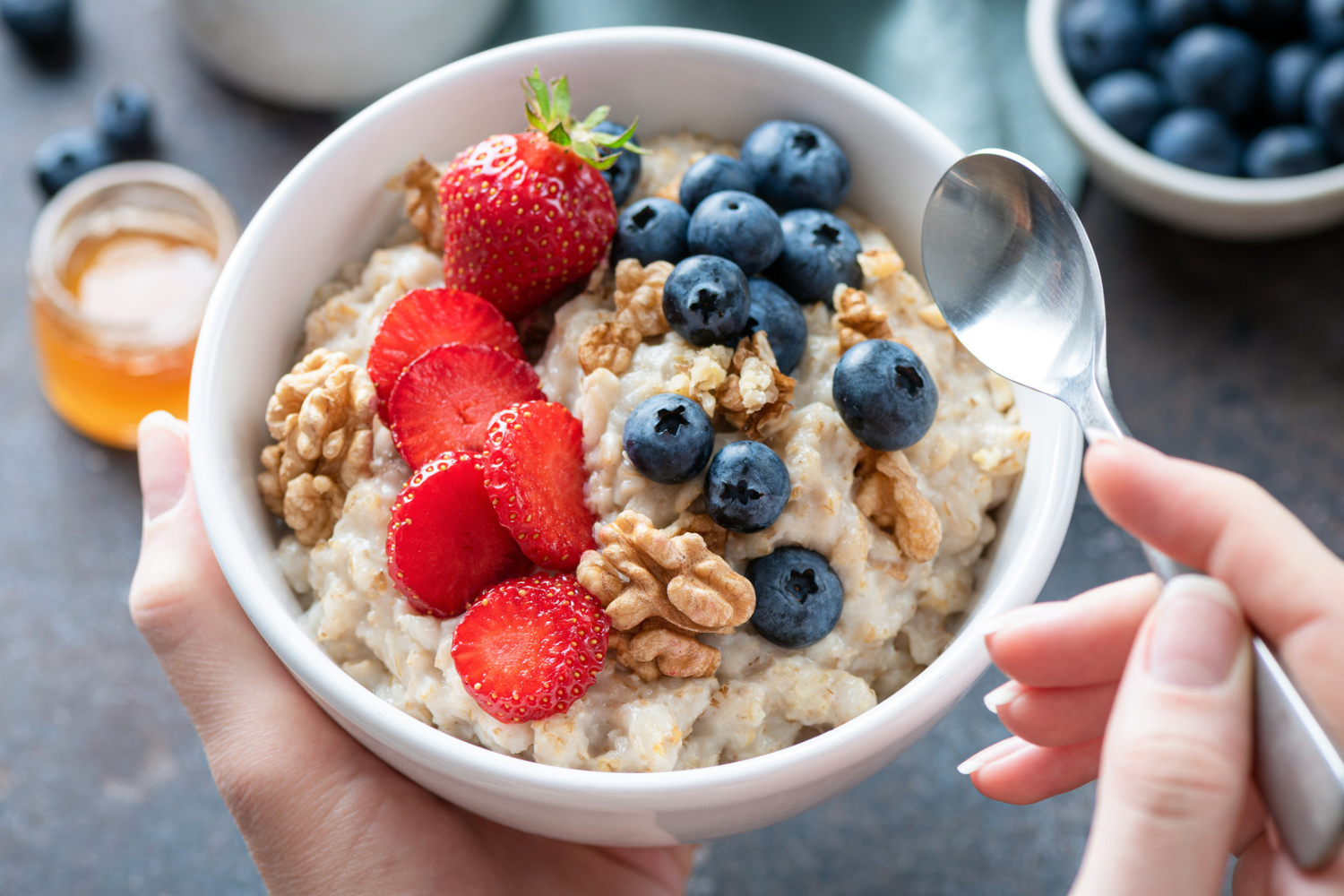Corn vs. flour: The classic tortilla debate. Purists prefer corn, but is there ever a place for flour? The Takeout turned to chef and restaurateur Jorge Guzmán for answers. With his restaurant, Chilango, the Mexican-born, three-time James Beard finalist for “Best Chef Midwest” brings the flavors that he loved as a kid growing up in Yucatán to the Minneapolis dining scene.
Guzmán’s answer is straightforward. “Corn tortillas are typically the go-to for most tacos, some people prefer flour. … I think the only time I really prefer flour [is] with bean and cheese burritos or a carne asada taco.” Corn tortillas — which predate flour tortillas by thousands of years — are more flavorful. The nutty taste of nixtamalized corn is the star of the show. Flour tortillas, meanwhile, tend to have a mild, slightly sweet taste. In some instances, they might taste bland.
Like Guzmán, many people prefer flour tortillas for burritos. The stretchy, pliable texture can handle all those fillings, where corn tortillas would quickly break apart. But you’ll want to stick to corn for most other applications. (Yes, that means quesadillas, too.) Even though many Mexican restaurants make them with flour, corn tortillas — lightly browned in a frying pan or griddle — add a richer flavor and a satisfying crunch. Just stack two small corn tortillas on top of each other instead of folding one big tortilla in half; Otherwise, the tortillas could crack along the fold.
Corn tortillas vs. flour tortillas
Flour tortillas are sturdier, so some cooks opt for flour if they’re using heftier ingredients. It’s pretty hard to roll a Chipotle-sized burrito with fragile corn tortillas. However, there are ways to make corn tortillas sturdier: Heating them makes them pliable and less likely to crack. You can try the old taco shop trick of stacking two tortillas together, too.
Some stores sell corn and flour blends, which help fill in the gaps. Flour adds gluten, which provides that stretchier structure. By blending the two together, you get the best of both worlds: The sturdiness of a flour tortilla with the flavor and texture of corn.
You might also need to stick to one or the other if you’re on a specific diet. Corn tortillas are often considered to be more nutritious: They’re high fiber, low calorie, low fat, and low sodium. They also have magnesium and satiating whole grains, too. The benefit to flour tortillas is that they tend to be higher in iron. Of course, they’re a no-go for folks on gluten-free diets. Always check the ingredients if you have a wheat allergy or gluten sensitivity — even if you’re buying corn tortillas, which could still have trace amounts of flour.
How to heat tortillas
Jorge Guzmán recommends using a comal — a Mexican stovetop griddle — to heat tortillas. No comal? Any griddle will do. “You don’t need oil. Just place the tortilla on the hot surface and let [it] sit for 30 seconds and flip,” he says.
Heating corn tortillas also helps them hold their shape. After they come off the stove, they’ll be stronger and more pliable. Just don’t steam them: They’ll get soggy and become prone to ripping. And as for the microwave? Strictly off limits. Microwaving tortillas ruins their texture and structural integrity.
Steaming, however, makes flour tortillas soft, warm, and pliable — perfect for burritos. Using the microwave to heat flour tortillas is less of a sin, especially if you do it right. But using the oven is almost as easy, and it’ll give you better results. While you preheat your oven to 350 degrees Fahrenheit, wrap a stack of tortillas in aluminum foil and add a dash of water. Then, set them in the oven for 15 minutes. You can heat flour tortillas on the stovetop, too. The same rules apply to both corn and flour tortillas: Use a dry griddle over medium heat. Just be aware that they’ll become crispier and harder to fold, so shape the tortillas before throwing them on the griddle.
How to find the best tortillas
The best tortillas are made from minimal ingredients. “[Corn] tortillas should have … water, cal, corn, salt,” Jorge Guzmán explains. “If it has more, then they are not worth buying. Flour tortillas should have lard, flour, salt, and sometimes baking powder and that’s it. You’ll know they are fresh because there are no preservatives.”
The one exception to the rule on additives? Calcium hydroxide (or “cal”), also called hydrated lime. Cal is part of the nixtamalization process, which helps soften corn to make it easier to digest. It brings out nutrients and makes it easier to shape the corn into tortillas and tamales, too. Mesoamericans have used it for thousands of years, and it’s a key part of tortilla-making.
But how do you find fresh, preservative-free tortillas? Check smaller grocery stores and Mexican markets. You should use them up fast, but don’t toss them if they get old: Stale tortillas are great for soups. For supermarket tortillas, check the sell-by date. Fresh is always best, even if the tortillas contain preservatives. You can also always try for a batch of homemade tortillas. It’s more work, but it just might be worth it.
















:max_bytes(150000):strip_icc():focal(749x0:751x2)/jerry-butler-071524-4-3473f163a1dc42699d5c0653cbff10bb.jpg)

